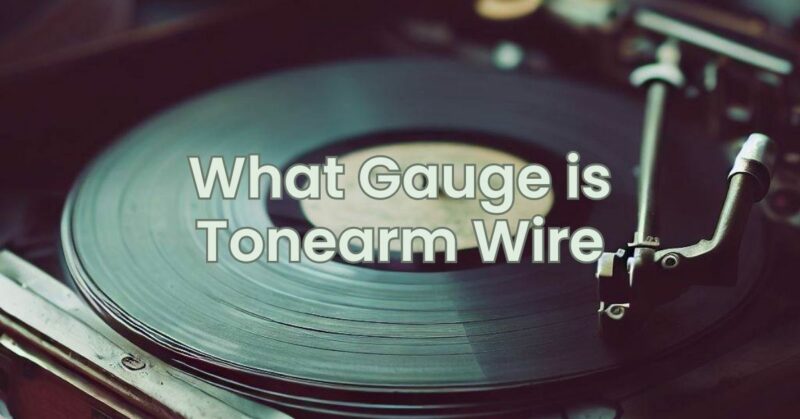Tonearm wire plays a crucial role in the performance of a record player. It is responsible for transmitting the delicate electrical signals generated by the cartridge to the phono preamplifier or the internal electronics of the turntable. The gauge of the tonearm wire refers to its thickness or diameter and can impact the signal quality and overall sound reproduction. In this article, we will explore the concept of tonearm wire gauge and its significance in record players.
Understanding Tonearm Wire Gauge:
Tonearm wire gauge refers to the thickness or diameter of the wire used in the tonearm assembly of a record player. The gauge is typically denoted by a numerical value, and the lower the number, the thicker the wire. For example, a higher gauge number like 30AWG indicates a thinner wire compared to a lower gauge number like 24AWG.
Importance of Tonearm Wire Gauge:
The gauge of the tonearm wire can affect several aspects of the record player’s performance:
- Signal Transmission: The thickness of the wire impacts the resistance and conductivity of the electrical signal passing through it. Thicker wire with a lower gauge offers lower resistance, resulting in better signal transmission and reduced loss of audio information.
- Signal Loss: Thinner wires with higher gauge numbers may exhibit higher resistance, leading to a greater potential for signal loss and degradation. This can result in a loss of detail, dynamics, and overall fidelity in the audio reproduction.
- Capacitance: The capacitance of the tonearm wire is another factor influenced by its gauge. Capacitance refers to the ability of the wire to store an electrical charge. Higher capacitance can affect the frequency response of the system, leading to alterations in the tonal balance and potentially affecting the accuracy of the audio reproduction.
Finding the Right Gauge:
Choosing the right gauge for tonearm wire depends on various factors, including the specific cartridge, tonearm design, and personal preferences. It’s important to note that many turntable manufacturers select an appropriate gauge during the design and manufacturing process to ensure optimal performance.
However, some audiophiles and enthusiasts may opt to upgrade their tonearm wire to achieve a desired sound quality. In such cases, it’s crucial to consult the manufacturer’s guidelines or seek advice from knowledgeable professionals to ensure compatibility and minimize potential risks.
Considerations for Upgrading:
If considering an upgrade to the tonearm wire, here are a few factors to keep in mind:
- Compatibility: Ensure that the new wire is compatible with the cartridge and tonearm of your record player. Different cartridges and tonearms may have specific requirements in terms of wire gauge and impedance matching.
- Material: Tonearm wires are often made of materials like copper or silver. Each material has its own sonic characteristics, so consider the tonal balance and sonic attributes you desire when choosing the wire material.
- Expertise: If you’re uncertain about the process or lack experience in working with tonearm wires, it’s advisable to seek professional assistance. A qualified technician or experienced audio enthusiast can provide guidance and ensure proper installation.
The gauge of the tonearm wire is an important consideration in the performance of a record player. While thicker wires with lower gauge numbers generally offer better signal transmission and reduced resistance, it’s essential to consider the overall design and compatibility of the system. Upgrading tonearm wire should be approached with caution, and seeking guidance from professionals is advisable to ensure optimal performance and minimize potential risks. Ultimately, finding the right balance between wire gauge, material, and personal preferences can help achieve the desired sound quality and enhance your overall listening experience.


